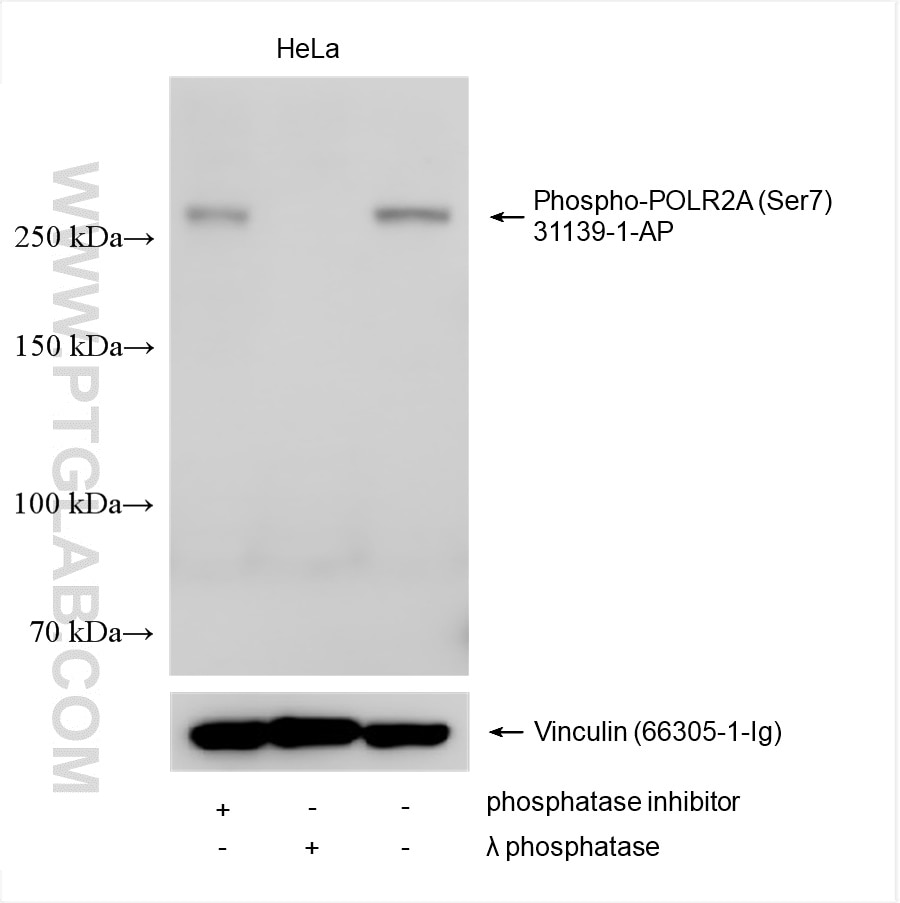Tested Applications
| Positive WB detected in | HeLa cells, λ phosphatase treated HeLa cells |
Recommended dilution
| Application | Dilution |
|---|---|
| Western Blot (WB) | WB : 1:500-1:2000 |
| It is recommended that this reagent should be titrated in each testing system to obtain optimal results. | |
| Sample-dependent, Check data in validation data gallery. | |
Product Information
31139-1-AP targets Phospho-POLR2A (Ser7) in WB, ELISA applications and shows reactivity with Human samples.
| Tested Reactivity | Human |
| Host / Isotype | Rabbit / IgG |
| Class | Polyclonal |
| Type | Antibody |
| Immunogen | Peptide Predict reactive species |
| Full Name | polymerase (RNA) II (DNA directed) polypeptide A, 220kDa |
| Calculated Molecular Weight | 217 kDa |
| Observed Molecular Weight | 260 kDa |
| GenBank Accession Number | NM_000937 |
| Gene Symbol | POLR2A |
| Gene ID (NCBI) | 5430 |
| RRID | AB_3669869 |
| Conjugate | Unconjugated |
| Form | Liquid |
| Purification Method | Antigen affinity purification |
| UNIPROT ID | P24928 |
| Storage Buffer | PBS with 0.02% sodium azide and 50% glycerol pH 7.3. |
| Storage Conditions | Store at -20°C. Stable for one year after shipment. Aliquoting is unnecessary for -20oC storage. 20ul sizes contain 0.1% BSA. |
Background Information
DNA-directed RNA polymerase II subunit RPB1(POLR2A), is part of the core element of the basic RNA polymerase II transcription mechanism. During transcription elongation, Pol II moves on the template as the transcript elongates. Elongation is influenced by the phosphorylation status of the C-terminal domain (CTD) of Pol II largest subunit (RPB1), which serves as a platform for the assembly of factors that regulate transcription initiation, elongation, termination, and mRNA processing.
Protocols
| Product Specific Protocols | |
|---|---|
| WB protocol for Phospho-POLR2A (Ser7) antibody 31139-1-AP | Download protocol |
| Standard Protocols | |
|---|---|
| Click here to view our Standard Protocols |



